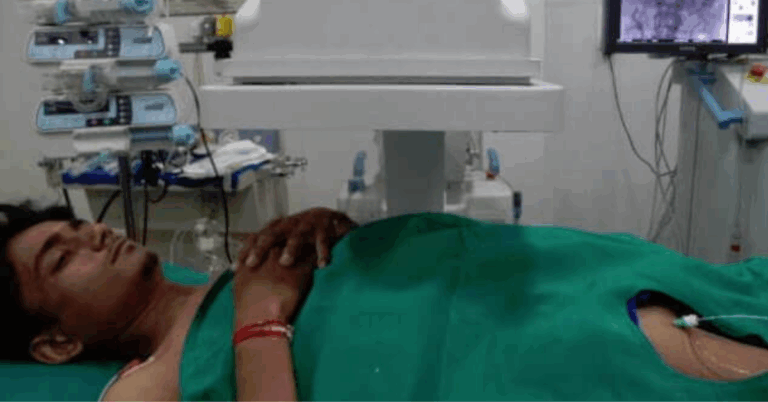Cerebral Palsy Stem Cell Treatment in India: A Comprehensive Guide
Cerebral Palsy (CP) is a neurological disorder that affects motor skills, coordination, and muscle tone, often resulting from brain injury or abnormal brain development. CP can manifest in various forms, ranging from mild to severe, and it can lead to physical and cognitive impairments. Traditional treatments for cerebral palsy often involve therapy, surgery, and medications. However, with advancements in medical science, stem cell therapy has emerged as a promising treatment for improving the quality of life of those suffering from CP.
India has become one of the leading countries for Cerebral Palsy Stem Cell Treatment India due to its world-class medical facilities, experienced doctors, and affordable healthcare options. In this article, we will explore how stem cell therapy is being used to treat cerebral palsy, its benefits, and what you need to know if you’re considering this treatment option in India.
What is Stem Cell Therapy for Cerebral Palsy?
Stem cell therapy for cerebral palsy involves the use of stem cells to regenerate or repair damaged brain cells that contribute to the neurological impairment. Stem cells have the ability to differentiate into various types of cells, including brain cells. By introducing stem cells into the body, medical professionals aim to stimulate the repair of damaged tissues, improve neural connections, and enhance overall motor function.
While stem cell therapy for cerebral palsy is still considered experimental, many studies and patient experiences have shown promising results, particularly in improving motor skills, coordination, and overall cognitive development. This innovative treatment aims to address the root cause of CP by encouraging the regeneration of the damaged areas of the brain.
Types of Stem Cells Used for Cerebral Palsy Treatment
There are different types of stem cells used in cerebral palsy treatments, and each type offers unique benefits. The most common stem cell sources used in treating cerebral palsy are:
-
Umbilical Cord Stem Cells
These stem cells are collected from the umbilical cord after birth and are known for their ability to transform into various types of cells. They are typically used for regenerative treatments due to their high potency and low risk of rejection. -
Bone Marrow Stem Cells
These stem cells are harvested from the patient’s own bone marrow. They have the ability to differentiate into multiple cell types, including nerve cells. Bone marrow-derived stem cells are often used for regenerative treatments because they are less likely to cause an immune response. -
Adipose Stem Cells
These stem cells are derived from the patient’s fat tissue. They are gaining popularity due to their ability to generate various cell types and their ability to repair damaged tissues. -
Induced Pluripotent Stem Cells (iPSCs)
iPSCs are adult cells that have been reprogrammed to function like stem cells. They are still under investigation, but early research suggests they have significant potential for treating neurological disorders, including cerebral palsy.
Benefits of Stem Cell Treatment for Cerebral Palsy
Stem cell therapy offers several potential benefits for individuals with cerebral palsy, especially when traditional treatments have not provided adequate improvement. Some of the key benefits of stem cell treatment for CP include:
-
Improved Motor Skills and Coordination
One of the most common improvements noted after stem cell therapy is enhanced motor skills and better muscle coordination. Patients often show progress in physical activities such as walking, running, or performing basic tasks. -
Enhanced Brain Function
Stem cells have the ability to regenerate brain cells, which can lead to improved cognitive abilities, better memory, and enhanced focus and attention. -
Reduction in Muscle Spasticity
Many patients with cerebral palsy experience spasticity, which leads to stiff muscles and painful contractions. Stem cell therapy has been shown to reduce spasticity and improve the range of motion in affected limbs. -
Improved Speech and Communication
In some cases, stem cell therapy has led to improvements in speech and communication abilities. This is particularly beneficial for children with CP who may have difficulty speaking due to impaired brain function. -
Reduced Dependency on Medications
By improving motor and cognitive function, stem cell therapy can help reduce the need for medications typically used to manage symptoms of cerebral palsy, such as muscle relaxants and anti-seizure drugs.
Stem Cell Therapy Procedure for Cerebral Palsy
The stem cell therapy procedure for cerebral palsy generally involves the following steps:
-
Initial Consultation
A consultation with a specialist in stem cell therapy is essential. During this consultation, the doctor will assess the patient’s medical history, conduct a physical examination, and determine whether the patient is a good candidate for stem cell therapy. -
Stem Cell Harvesting
Once the patient is deemed eligible for the procedure, stem cells are harvested from the selected source (such as bone marrow, umbilical cord, or adipose tissue). This step is performed under local anesthesia to ensure comfort during the extraction process. -
Stem Cell Preparation
After harvesting, the stem cells are processed and prepared for injection. The cells are carefully purified to ensure that only the healthiest and most viable cells are used for treatment. -
Injection of Stem Cells
The processed stem cells are then injected into the affected areas of the body, including the bloodstream or directly into the spinal cord or brain, depending on the location of the damage. The goal is for the stem cells to reach the damaged brain regions and promote healing. -
Recovery and Monitoring
After the procedure, patients are monitored for any adverse effects and given specific guidelines on post-treatment care. Recovery times can vary depending on the patient’s condition, but most individuals can resume their normal activities after a brief period of rest.
Why Choose India for Stem Cell Therapy?
India has become a global hub for medical tourism, particularly for advanced treatments such as stem cell therapy. Here are some reasons why patients are choosing India for cerebral palsy stem cell treatment:
-
World-Class Medical Facilities
India is home to numerous hospitals and medical centers equipped with the latest technology and staffed by highly trained professionals specializing in stem cell therapy. -
Experienced Doctors
Indian doctors are renowned for their expertise in stem cell research and treatment. Many of them have received training from top medical institutions across the world. -
Cost-Effective Treatment
Stem cell therapy in India is significantly more affordable compared to countries like the US or the UK, making it a cost-effective option for many families. -
High Success Rates
Several hospitals in India have reported successful outcomes in treating cerebral palsy using stem cell therapy, with many patients showing substantial improvements in motor function and overall quality of life. -
Accredited Clinics
Many stem cell therapy clinics in India are accredited by international medical boards, ensuring that they adhere to the highest standards of care and safety.
Frequently Asked Questions (FAQ)
1. Is stem cell therapy for cerebral palsy safe?
Stem cell therapy is generally considered safe when performed by experienced medical professionals. However, as with any medical procedure, there are risks involved. It’s important to consult with a qualified doctor who specializes in stem cell treatments to assess the suitability and risks for the individual.
2. How long does it take to see results from stem cell therapy for cerebral palsy?
Results from stem cell therapy can vary from person to person. Some patients begin to see improvements within a few weeks, while others may take months to notice changes. Long-term benefits may continue to improve even after the therapy is completed.
3. Are there any side effects of stem cell therapy for cerebral palsy?
While side effects are rare, some patients may experience mild pain at the injection site, fatigue, or flu-like symptoms. Serious side effects are uncommon but should be monitored by a healthcare professional.
4. How much does stem cell therapy for cerebral palsy cost in India?
The cost of stem cell therapy for cerebral palsy in India is significantly lower than in many other countries. The price can range depending on the hospital, type of stem cells used, and the complexity of the treatment. On average, the cost is much more affordable than in Western countries.
5. Who is a good candidate for stem cell therapy for cerebral palsy?
Good candidates for stem cell therapy are individuals with cerebral palsy who have not responded well to traditional treatments and are looking for alternative options. A thorough evaluation by a specialist is necessary to determine candidacy.
Conclusion
Stem cell therapy for cerebral palsy is an innovative and promising treatment that holds the potential to improve the quality of life for many individuals with CP. With advancements in medical technology, India has emerged as a leading destination for stem cell treatments, offering affordable, world-class care to patients from around the globe. If you or your loved one is considering stem cell therapy for cerebral palsy, it’s essential to consult with a qualified healthcare provider to understand the treatment options, potential benefits, and risks involved.







